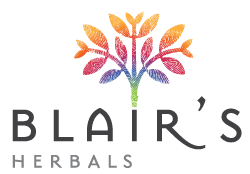OSHA – ligusticum porteri, otherwise known as bear root — is found in many of our lung and throat tinctures and medicines. It is revered by Native Americans, but today it is overly harvested and is a threatened species.
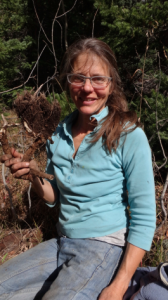 Osha is generally found above 9,000 feet sometimes close to water, usually amidst Aspen groves, growing to 6’ with beautiful umbels (umbrella like florets) and tall brown hollow stalks. Deep roots wind into the earth permeating the soil with a spicy pungent and very distinctive celery smell. It has an aroma that is addicting. It is intoxicating. It is sweet. It opens up my heart. I am drawn towards this beautiful spirit of a plant especially in late Fall. It was at this time a few years ago in an Osha herbal class that I learned of the powerful medicine and the sacredness of this plant. And with that, a clear and strong message of honoring plant, spirit, and its medicine and the disturbing accounts of how Osha has been over harvested and taken before it is ready –that is after three frosts. So, with the utmost respect for this connection to the beauty and intimacy of Osha, I first was introduced to Osha in an herbal class setting, high up in the mountains
Osha is generally found above 9,000 feet sometimes close to water, usually amidst Aspen groves, growing to 6’ with beautiful umbels (umbrella like florets) and tall brown hollow stalks. Deep roots wind into the earth permeating the soil with a spicy pungent and very distinctive celery smell. It has an aroma that is addicting. It is intoxicating. It is sweet. It opens up my heart. I am drawn towards this beautiful spirit of a plant especially in late Fall. It was at this time a few years ago in an Osha herbal class that I learned of the powerful medicine and the sacredness of this plant. And with that, a clear and strong message of honoring plant, spirit, and its medicine and the disturbing accounts of how Osha has been over harvested and taken before it is ready –that is after three frosts. So, with the utmost respect for this connection to the beauty and intimacy of Osha, I first was introduced to Osha in an herbal class setting, high up in the mountains
The osha, bear, and the aspen create a sacred trio of powerful medicine. The osha roots mingle with the roots of the Aspen. The bears are nearby–there was a sighting!
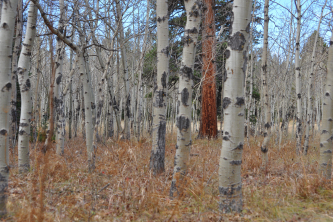 We began our day with ritual–honoring the bear, aspen, and osha through song, dance and offerings. We were in their home. We would soon be asking for a little bit of osha medicine for us and our families–to carry us through the winter cold and flu seasons.
We began our day with ritual–honoring the bear, aspen, and osha through song, dance and offerings. We were in their home. We would soon be asking for a little bit of osha medicine for us and our families–to carry us through the winter cold and flu seasons.
We would be taking osha from the bears last food source before hibernating and the first digestion stimulating food in the Spring. The bears have been seen using osha for their own medicine -when they are sick or injured and also when they come out of hibernation. We were living into and in touch with the flow of the cycles of season and Osha is one of the main ingredients found in herbal cough medicines because it is thought to dilate or open the airways. Because it has been over harvested, it is essential to understand that vital relationship to source -take only what you need and listen to the plant. Return any unused parts to the site.
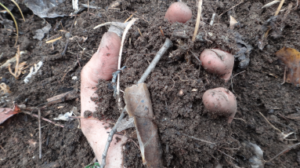 Into the grove of aspens we walked looking for signs of the Osha plant (a member of the parsley family). It closely resembles its very poisonous relatives–poison hemlock and water hemlock–so it is vital that you can identify the plant. The hemlocks are toxic and On this particularly glorious mid-October day, we set about digging with our hands. We were not encouraged to use metal instruments-no shovels or picks, etc. Just like the bears, we began to remove the dirt around the base of the plant, excited to see what we could harvest. Little did I know that this might take upwards of two hours on my knees with sore and bloody hands in no time.
Into the grove of aspens we walked looking for signs of the Osha plant (a member of the parsley family). It closely resembles its very poisonous relatives–poison hemlock and water hemlock–so it is vital that you can identify the plant. The hemlocks are toxic and On this particularly glorious mid-October day, we set about digging with our hands. We were not encouraged to use metal instruments-no shovels or picks, etc. Just like the bears, we began to remove the dirt around the base of the plant, excited to see what we could harvest. Little did I know that this might take upwards of two hours on my knees with sore and bloody hands in no time.
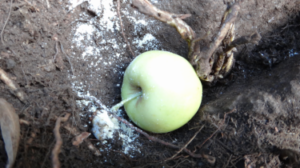 Finally, the plant gives herself to me. We were guided to leave an apple or other food offering in the hole to replace that food source that the bear might have counted on. The plants have character–they have personalities. I have seen and experienced the essence of grandmother osha, I have seen mother ohsa and her children in the plant. I am grateful for the wisdom. I will take the root and make medicine for my family and friends. I find the strings of the root are sweet and great to infuse in honey. The base root can be used repeatedly in tea –dried and used again as needed. The root can be dried and ground up to add to baked dishes or used in tinctures. They can be hung in I carry that experience forever and deep within me and am grateful. In my fast paced world, it is easy to quickly find myself out of balance. Getting back to nature is powerful and leaves a healing memory.
Finally, the plant gives herself to me. We were guided to leave an apple or other food offering in the hole to replace that food source that the bear might have counted on. The plants have character–they have personalities. I have seen and experienced the essence of grandmother osha, I have seen mother ohsa and her children in the plant. I am grateful for the wisdom. I will take the root and make medicine for my family and friends. I find the strings of the root are sweet and great to infuse in honey. The base root can be used repeatedly in tea –dried and used again as needed. The root can be dried and ground up to add to baked dishes or used in tinctures. They can be hung in I carry that experience forever and deep within me and am grateful. In my fast paced world, it is easy to quickly find myself out of balance. Getting back to nature is powerful and leaves a healing memory.

Please note that Osha and other flowers/plants may not be taken from open space areas –it is illegal and you will be fined! And, you need a permit for National Forest lands. If you are on private property, take only what you need and look at the surrounding area to ensure responsible harvesting. Osha may be difficult to identify and closely resembles poisonous plants–take a class and know your plants! It is not recommended for pregnant or nursing women. Please harvest sustainably and respectfully. This is not intended to provide identification or to be used as treatment advice. For more information, please check out this source from Botanical Studies.
